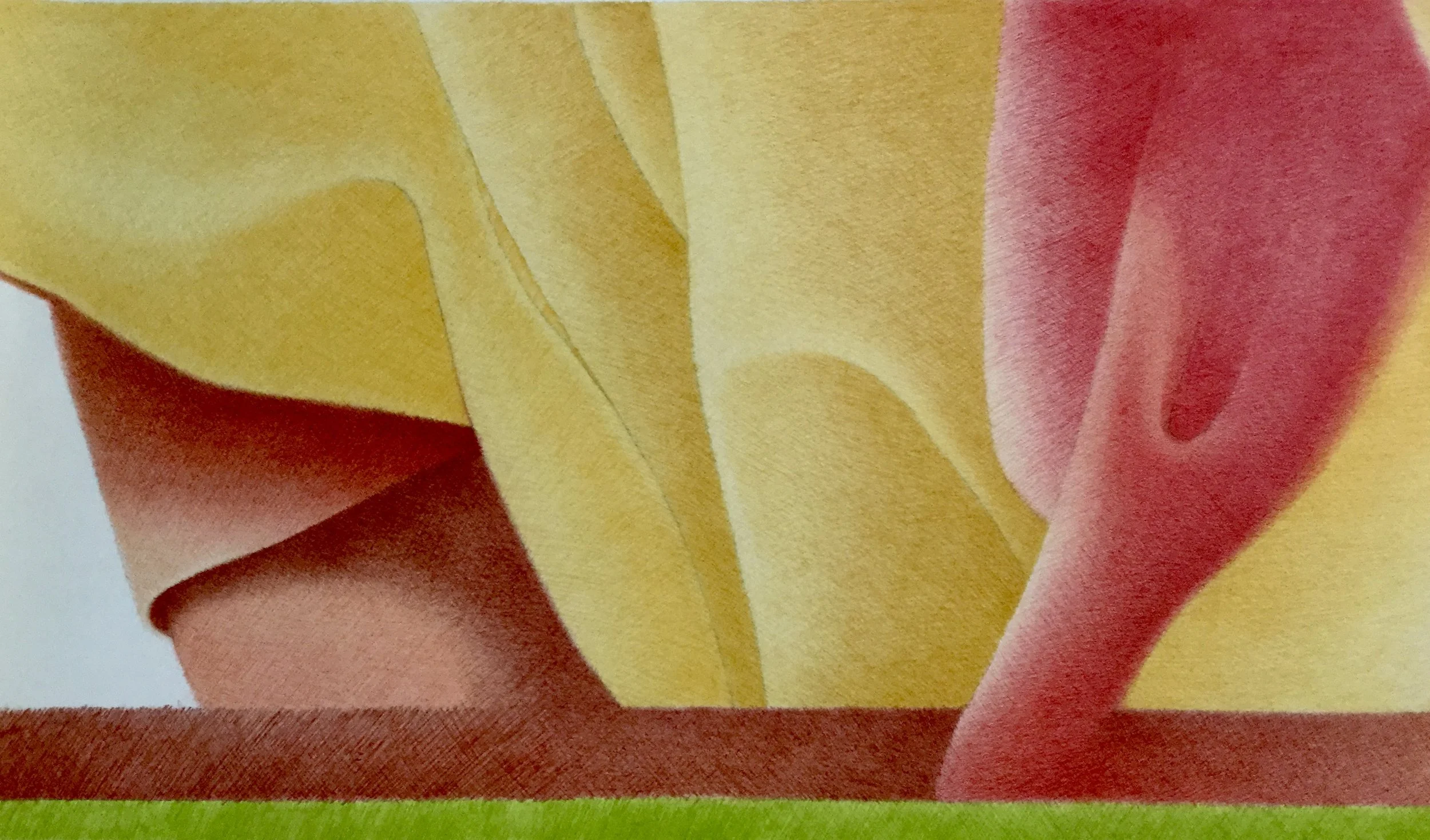21”h x 33”w
Terracotta pencil on paper
Collection:
The Metropolitan Museum of Art
Flow 1979
Mission Statement:
To preserve his legacy, to broaden his audience, and to spark the interest of critics and historians of art, I have determined to present Michael Vivo’s work and creative history to the public at large.
Michael Vivo was my husband. That relationship allowed me to be a primary witness to his development across time and throughout several pivotal shifts in his career. Our complementary backgrounds in art allowed us ample opportunity to engage in numerous discussions about his techniques and those influences that stirred his creative impulses, the latter arising both from within and apart from direct references to the artistic canon.
Apart from the visual power of the drawings, a brief analysis of Vivo’s form and content within its structural framework will offer a richer grasp of his motivation and a more thorough appreciation of the degree to which he realized his goals.
In his lifetime, Vivo achieved marked success in establishing his profile among his contemporaries. Because of his untimely death, that arc of accomplishment was aborted. Nevertheless, the work, represented in collections across the US, stands as a testament to Vivo’s talent and skill, his grace and power, as a master of expression. This site is an attempt to ensure an accurate narrative for posterity.
19”h x 36”w
Color pencil on paper
Private Collection,
Coconut Creek, FL
Ochresand II 1980
What is a pencil? A tool, an implement: to write a word, to draw a line, to create a feeling; a means of communicating the verbal or the visual — both, an expression. In the hands of Michael Vivo, a pencil was all of these and in the integration of its functions, a pencil became a powerful instrument.Still, what allowed for the creation of such sensational drawings required more than technique or the proficiency of Vivo’s hand. A key element in the production of the works was the integration of his eye and his temperament that resulted in his vision.Lush, voluptuous and erotic. These words seem to characterize the work of Michael Vivo. His large scale pencil drawings are nothing if not sumptuous. In both form and content, they evoke a sensitivity that is intensely human, despite the inanimate nature of their immediate subject matter.The starting point of Vivo’s compositions was often a piece of fabric. To create a model, the fabric was folded/draped into a complex arrangement, one which would capture light and harbor shadow.Vivo used opposing forces in the drawn image to create a kind of interior terrain that is clearly luminous while maintaining a subtle mystery, a space of intrigue. It is in the balance between the clear and obscure that Vivo’s work reaches a tension that sparks the animate, that vitalizes the piece of cloth.Depending upon the specific arrangement of forms in the composition, the drawings become landscapes, figure compositions or still-life; they move beyond the original element of the model; i.e., the fabric. That word is, in fact, well-chosen: the compositions, indeed, move: they breathe, they thrust, they recline. In all cases, they engage the viewer in his/her personal, and often private realm. The richness of the late work is due, in part to Vivo’s late re-fashioned interest in and exploration of color. Evidence of this direction may be seen, to a minimal degree in earlier works, which include several monochromatic pieces done in a soft terracotta. The late works, however, reveal a striking, in-depth analysis of color harmonies, which expands and amplifies a simultaneous concern with enlivened form. Whereas Vivo’s earlier works were quiet and graceful, the late pieces stir. The interaction of forms with each other and against the ground creates provocative and animate sensations through the allusion of the forms to the human presence they evoke.MArguerita J. Grecco, PhD, art History
